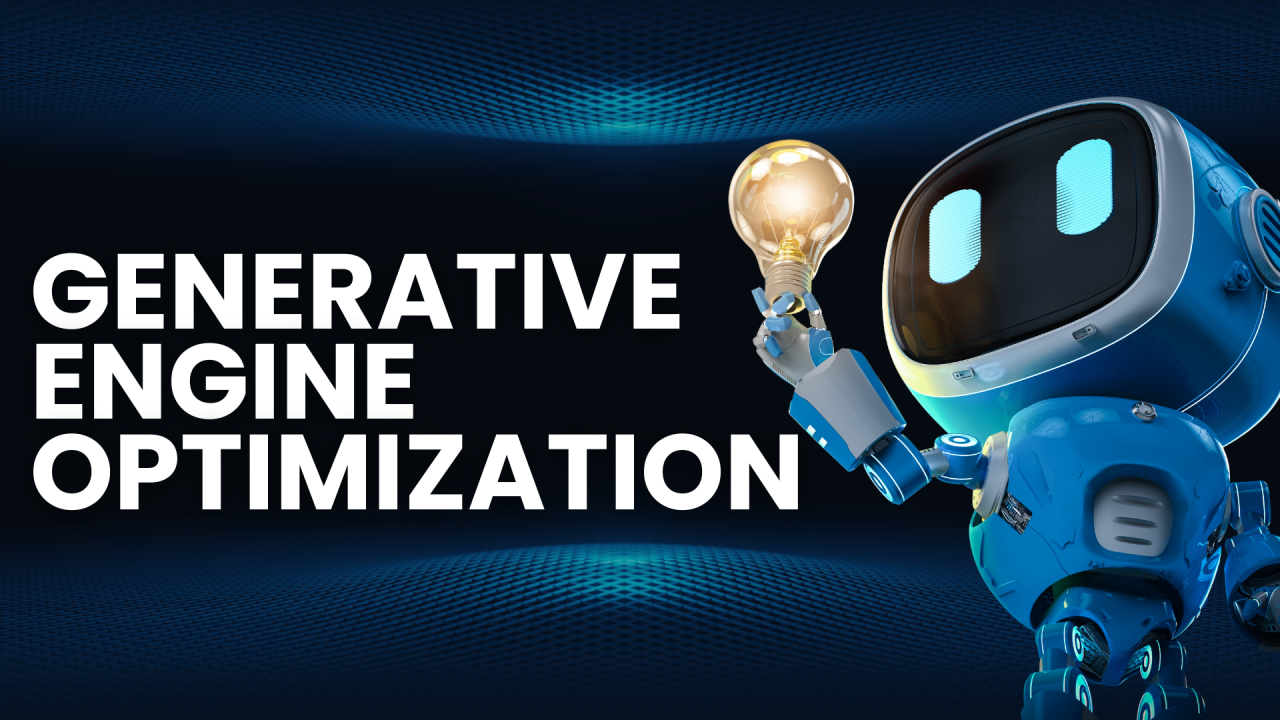
Generative Engine Optimization (GEO) is a
new approach to digital marketing that focuses on optimizing content for AI-driven
search engines and large language models (LLMs), such as Google's AI
Overviews, Microsoft Copilot, and others. Unlike traditional SEO, which
primarily aims to rank websites high on a list of search results, GEO's goal is
to ensure your content is selected, cited, and effectively summarized within
AI-generated responses.
This is a fundamental
shift from a "click economy" to a "visibility economy." In
the past, success was measured by clicks to your website. With GEO, success is
measured by your brand's presence and authority within the AI-generated answers
themselves, even if the user doesn't click through to your site.
While GEO and
traditional SEO share the goal of increasing online visibility, their methods
and focus areas differ significantly.
|
Feature |
Generative Engine Optimization (GEO) |
Traditional Search Engine Optimization (SEO) |
|
Primary Goal |
To be cited and summarized in AI-generated answers. |
To rank a website high in a list of search results. |
|
Content Focus |
Contextual relevance and
providing direct, concise answers. Content should be conversational and
fact-based. |
Keyword-centric and
structured for crawlability and indexing. |
|
User Experience |
Aims to provide a comprehensive, all-in-one answer that
may eliminate the need for a click. |
Aims for a seamless, easy-to-navigate website experience
to encourage clicks and conversions. |
|
Ranking Factors |
Emphasizes expertise, authoritativeness, and
trustworthiness (E-E-A-T), along with structured data and clear, factual
language. |
Relies on a broader range of factors, including backlinks,
page speed, mobile-friendliness, and keyword density. |
|
Metrics |
Measures brand mentions, visibility within AI overviews,
and citation frequency. |
Measures clicks, impressions, click-through rates (CTR),
and conversions. |
To succeed in the age of
generative AI, you must integrate GEO best practices into your existing SEO
efforts. Here’s a step-by-step guide to help you get started.
1. Master Your Content
The core of any GEO
strategy is high-quality, authoritative content. AI models are trained on vast
datasets and prioritize information that is clear, accurate, and trustworthy.
2. Optimize for Conversational and Semantic Queries
Generative AI
understands natural language. This means you need to shift from a focus on
exact keywords to targeting a broader range of semantic queries.
3. Leverage Technical SEO and Structured Data
Technical SEO is still
crucial for GEO. It ensures that AI crawlers can easily access, understand, and
use your content.
4. Build a Robust Brand Presence
AI models consider brand
reputation and authority when selecting sources. A strong brand presence across
the web can increase your chances of being cited.
The rise of GEO doesn't
mean the death of traditional SEO. Rather, it signifies an evolution. The most
successful digital marketing strategies will be a hybrid of both.
By focusing on creating authoritative, contextually rich, and machine-readable
content, you can position your brand to win in both the traditional search
results and the new, AI-driven landscape. While traditional SEO will still
drive direct traffic, GEO ensures your brand maintains visibility and authority
in a world where users are getting their answers faster than ever.
The world of digital
marketing is never static, and Generative Engine Optimization is at the forefront
of its next evolution. As AI models become more sophisticated, so too will the
strategies for optimizing for them. Here are some of the key trends and
predictions shaping the future of GEO.
1. The Rise of Multimodal Optimization
Today's generative engines
are no longer just about text. They can understand, synthesize, and present
information across multiple formats, including images, videos, and audio. This
is powered by advanced technologies like Retrieval-Augmented Generation (RAG)
and multimodal embeddings, which allow AI to pull from various sources and
formats to create a comprehensive answer.
2. Entity-Based Optimization
AI models are moving
beyond simple keywords to understand entities—the real-world people, places,
and things that your content discusses. They identify the relationships between
these entities and use this knowledge to provide more nuanced, contextual
answers.
3. Real-Time and Community-Driven Content
While traditional SEO
relies heavily on evergreen content, GEO places a higher value on real-time and
user-generated content (UGC). AI models are increasingly citing community
forums like Reddit and social media platforms to provide authentic, up-to-the-minute
information.
4. The Evolving Role of Technical SEO
As AI crawlers become
more prevalent, the importance of a clean, healthy website remains paramount.
However, the focus of technical SEO is shifting. It's no longer just about
making your site easy for a traditional search bot to read; it's about making
it easy for an AI to parse, understand, and trust.
5. From Traffic to Authority
The ultimate goal of GEO
is to become a "trusted answer." The new measure of success is not
just website traffic, but rather how frequently your brand is cited as a source
of information within AI-generated responses. This marks a fundamental shift
from a traffic-based economy to an authority-based one.
Generative Engine
Optimization is not a fleeting trend; it is the natural evolution of digital
marketing in an AI-powered world. While traditional SEO will continue to be
important for driving direct traffic, GEO is the key to ensuring your brand
remains visible, relevant, and authoritative in the future of search. By
embracing a hybrid strategy that combines the best of both worlds, you can
position your brand to not only survive but thrive in this new era of digital
discoverability. The future of search is here, and it’s time to optimize for
it.
| Price: | 80320 |
| Categories: | Services / Web Services |
| Phone: | +94 711255861 |
| Address: | 1st cross rd |
| Email: | skysolshehara@gmail.com |